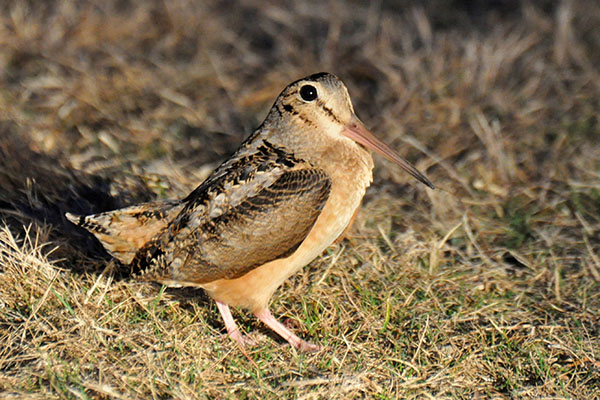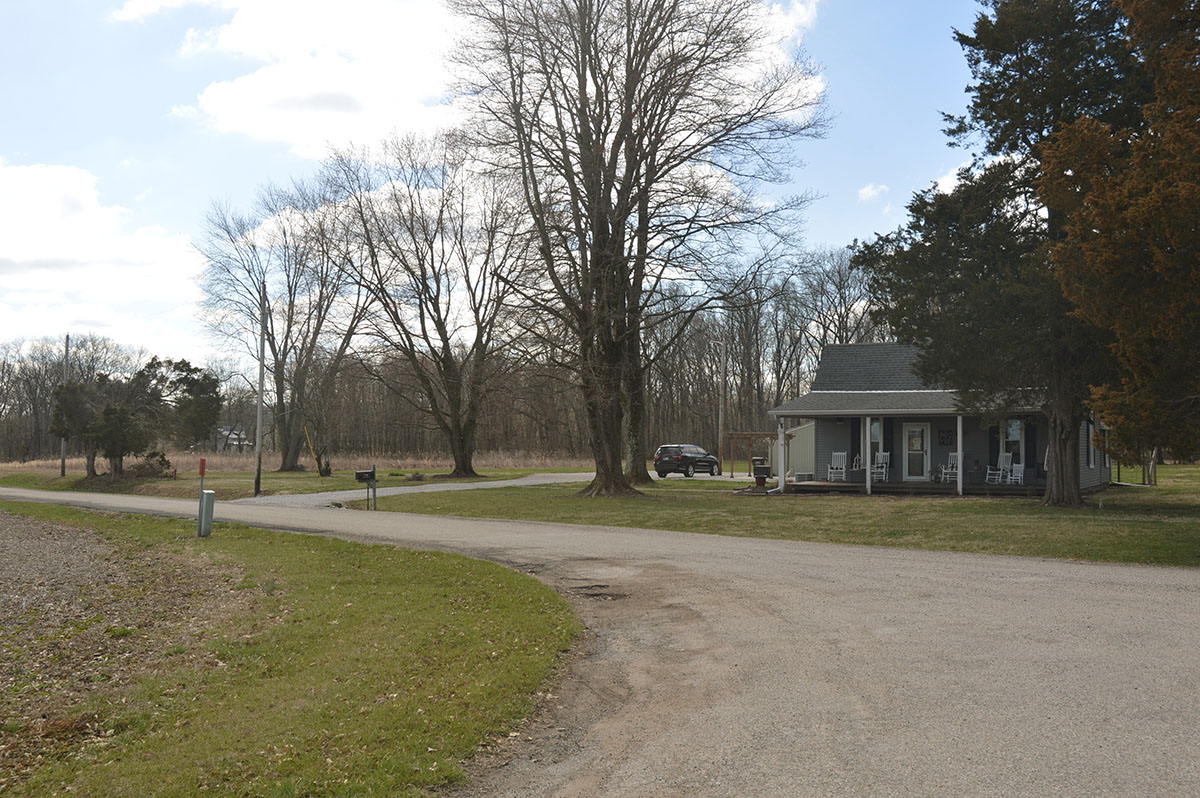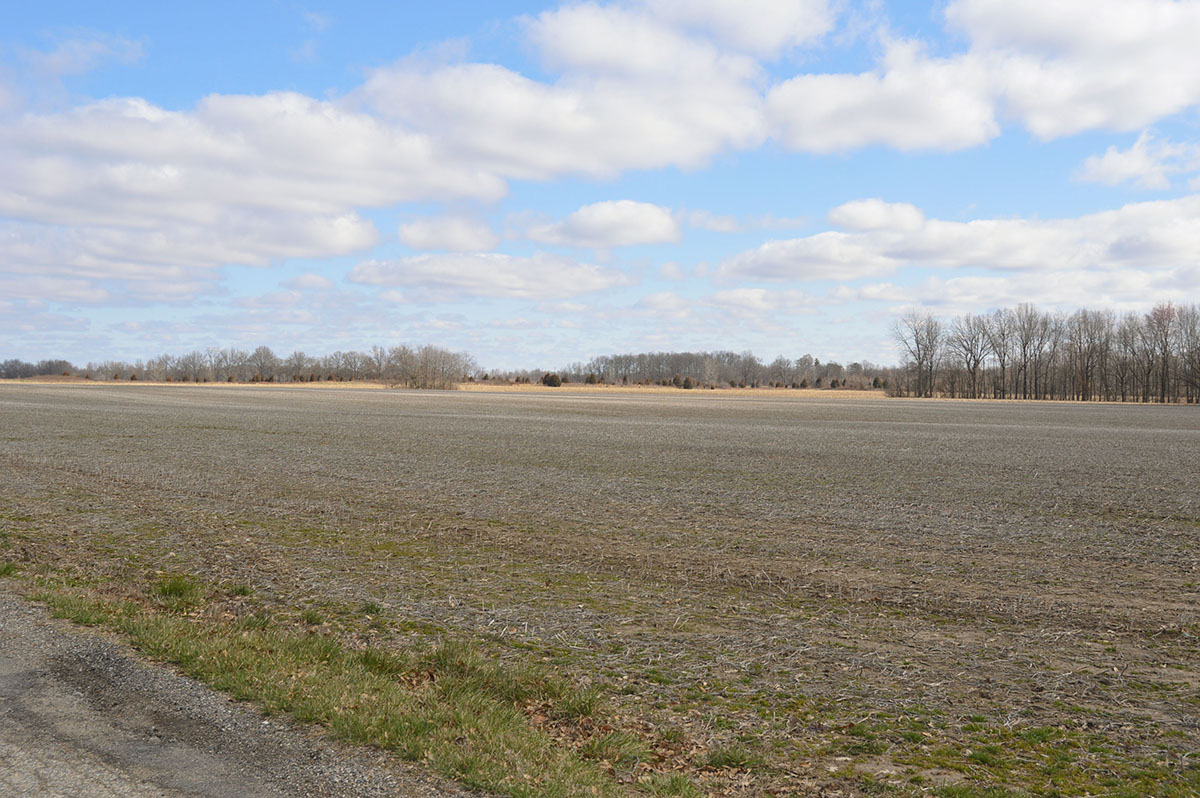In springtime, a favorite ritual of birdwatchers is to find and watch the American Woodcock on its mating ground, as it does its dance and courting flight. With the phone app, eBird, I was able to find a place nearby where woodcock had been sighted. At dusk one evening, my sister and I drove 12 miles south to Pimento, Indiana to find a woodcock.

As we pulled into this small agricultural town, population 347, I said to my sister, “that’s a birdwatcher house”.

The small house was surrounded by diverse habitat: woods, lawn, tall grasses, creek, and farmland – something for every bird! Many of the houses along Tryon Drive were similar, surrounded by woods and fields, each with their own private nature preserve. As luck would have it, we found two woodcock next to the ‘birdwatcher house’, in their own woodcock heaven.
Woodcock are a good indicator of soil health, as they feed almost entirely on earthworms. The harmony of this area, the coexistence of Nature and farmland, was a stark contrast to the barren landscape of Midwest industrial farming that many of us are familiar with. Here is the view across the street, with tree borders, found around Indiana farms.

I remember reading years ago that biodynamic farmers leave part of their land wild. From the Demeter International website, “At least 10% of the farmland is left wild or dedicated to biodiversity.” Biodynamic farmers use organic methods of agriculture, but in addition they promote and preserve biodiversity. By visiting this woodcock heaven, I had gotten a taste of what a biodynamic farm could look like, with both cultivated fields and natural surroundings. The promotion of soil fertility is paramount in biodynamic agriculture. By creating a farm area conducive to woodcocks, the farmers had also created a better place for themselves and their crops.
The Biodynamics Association has a webpage on recent research in biodynamic agriculture. Much of biodynamic research focuses on ideas put forward by Rudolf Steiner, including the use of soil preparations to enhance vital energy, and planting at optimal times in the calendar, but the benefits extend beyond his teachings, and include greater plant health and better soil structure. In future blogs, I hope to discuss ‘energy agriculture’, where the vital energy of the crops is increased.